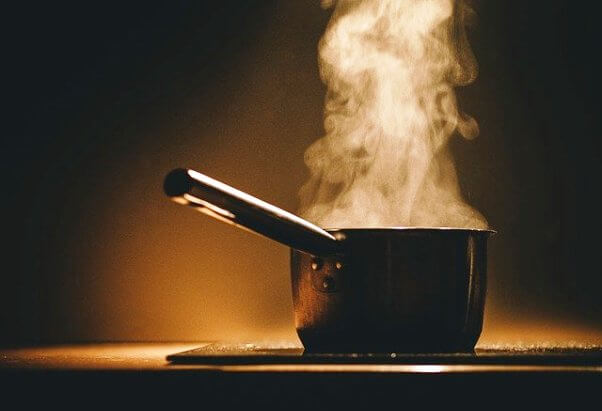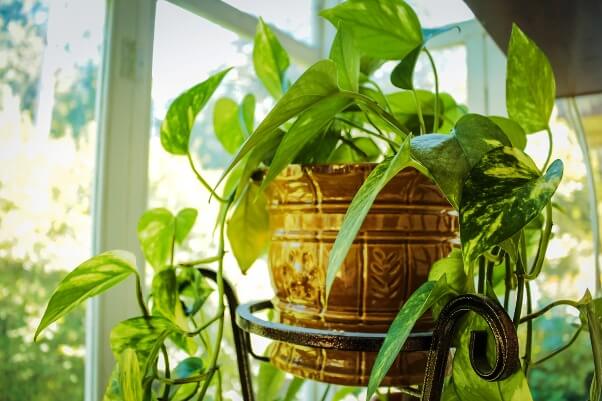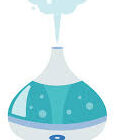How to Add Moisture to Dry Air without Humidifier: 17 Simple Ways
Do you want to know how to make a do-it-yourself DIY humidifier to add moisture to your indoor air? It is possible to humidify a room naturally.
It has many benefits. One of them is that you can avoid humidifier white dust.
Low humidity in your home can be very problematic. It aggravates allergies, makes you more susceptible to colds and flu, and leads to dry skin and scratchy throats, among other problems.
Even if you do not have a humidifier, you should know how to humidify a room. In these hard times, knowing how to make a homemade humidifier can help you save precious bucks.
17 ways to naturally humidify a room
Who says you must spend money when humidifying a room? The good ol’ methods that we are going to discuss in this article can humidify your home naturally.
Humidifiers do cause some nasty side effects, too. For example, they cause humidifier sickness. They also cause mold infestations at home.
It is also possible to raise the indoor humidity above 70 percent, and mold colonies will thrive in your house. In turn, exposing your family to such allergens will rear ugly mold toxicity symptoms.
Please note that these methods only offer a reprieve and that you will also not be able to tell when optimum humidity has been reached.
The best option is to use a humidifier. You can order the best humidifiers from Amazon.com.
1. Cook with an open pot: Useful humidity hacks
This is one of the best ways to humidify the air without a humidifier. One of the ways to do that is to cook in an open pot.
Let the sweet aroma waft up to your nostrils as the steam finds its way to the rest of the house.

It is simple, it is ingenious, and it does not require too much effort. You just need to let your food simmer on the stove while it is uncovered.
This is one of the top humidifier alternatives to try.
2. Dry your laundry indoors to add moisture to the air
To add moisture to the air, dry your wet clothes inside your house. This is one of the simplest ways to increase humidity in a home. Consider getting yourself several indoor clothes drying racks for this.
When you dry clothes inside your house, they slowly release moisture into the air, thus raising the humidity level. This moistens the dry air in the room.
Consider giving your clothes dryer a break when you start experiencing low humidity problems.
The reason for this is that the dryer, just like the other heating appliances, contributes to robbing you of the moisture in the air.
When you dry clothes inside your house, ensure that you hang them in a place that has sufficient airflow.
This ensures that they dry quickly and prevents the growth of microbes such as mold on your wet clothes.
3. Houseplants humidify a room naturally
Houseplants do more than just enhance your home’s interior beauty. They help purify your air.
They also teach how to add moisture to the air through a natural process known as transpiration.
During transpiration, the pores of the leaves open, and they release some water. This moisture then evaporates, and the air absorbs it.
You will certainly experience a big difference between a room with plants and one without. There will be no dry air in the house.
For this to effectively work to humidify a dry house, the plants need to be well hydrated. Therefore, you need to ensure that you regularly water them.
In the process, you will also be adding more moisture to the air while spraying or watering them.
You do not need to turn your home into a jungle with a myriad of houseplants. Just a few of them work perfectly well.
You can consider the Boston fern plant to have higher capabilities for humidifying and purifying the air.
4. Shower with your bathroom door open
If you have been wondering how to increase humidity in winter, showering with your bathroom door open is very effective. You can let steam escape into the house and add some moisture to the air.
People who live in areas with high humidity are advised to open windows to allow the steam to escape.
If you live in a place that experiences dry air, you need to keep the steam inside the house. So close the windows!
By showering with your bathroom door open, you allow the steam to humidify the surrounding rooms.
5. Stop draining the bathtub
Make your own humidifier in your bathtub!
If you prefer taking your bath in a bathtub to showering, avoid draining it when done. Instead, leave the warm, steaming water there. Do not close the bathroom door.
If you have a bathroom fan, leave it running. This way, the water will slowly evaporate, providing adequate moisture to the adjacent rooms.
6. Use a soaked sponge
When many people ask themselves how to moisten air without a humidifier, using a sponge rarely crosses their mind.
This can be a good homemade humidifier for coughing. Most people cough when their indoor air is too dry.
However, a sponge is a simple yet effective way that you can use to boost the humidity level in your home. Sponges can absorb moisture and hold it for a long time, thus making them a good option.
Just soak a big sponge in water and then place it somewhere with sufficient airflow.
If you can place it close to a fan, it will whip up some extra moisture into the air, and you will enjoy the extra humidity.
Since you need something to whip the vapor to spread it, a soaked sponge is a good way to humidify a room with air conditioning.
7. Curtains with water
Sprinkle your curtains with water. This is one of the simplest ways that you can use to improve the indoor humidity level in your home.
Only ensure that you do not use too much water, which can ruin the fabrics. Leave the windows open so that there is adequate airflow.
This will ensure that your curtains dry completely to prevent the growth of mold on them.
8. If you can get an indoor fountain
An indoor fountain does not only enhance your home’s interior aesthetics, but it is also very helpful at adding moisture to dry air without a humidifier.
An indoor fountain might sound like a very expensive option. However, many inexpensive fountains are available on the market.
As the water in the fountain moves constantly, a certain amount is released into the air, thereby humidifying your home in the long run.
Different fountains have different impacts depending on their size. The bigger the fountain, the bigger the impact on your indoor humidity, and vice versa.
9. Humidify a room with a bowl of water
There are so many tricks on how to naturally humidify a room, and placing an open container with water near a heat source is one of them.
How to increase humidity in a home without spending money does not get easier than using this option.
Place the bowl near a radiator, or a stove while cooking, although not directly on it. As the container heats up, the water will start to evaporate slowly, thereby increasing the moisture in the air.
While still on this method, we can also discuss how to humidify a room with a fireplace. It is the same thing.
Just place a bowl of water near the fireplace. Once it heats up, it produces vapor, which circulates all over your room.
10. Place some vases of water on the windowsills
Similar to placing a bowl full of water near a heat source, placing vases full of water on sunny windowsills can help humidify your home.

The heat from the sun will slowly evaporate the water in the vases, thereby increasing the moisture of the surrounding air. This trick can really be effective, and the good news is that it does not increase your electricity bills.
11. Boiling water on the stove for humidity
Boiling water to humidify the house is a sure way of adding moisture to the air. However, it is not always possible.
But there is the stovetop, which is another good way for a DIY room humidifier.
Cooking in the oven contributes to robbing the air in your home of some moisture. A stovetop, on the other hand, does not only improve the humidity level, but it can warm up your home too.
While simmering your food on the stovetop, leave the pot open, and the vapor generated will really help in humidifying your home.
You can also fill a big pot with water and leave it to simmer on your stovetop.
12. Power down your appliances
During the cold season, people crank up their heating systems to keep their homes warm. However, these heating appliances are the greatest culprits for drying up your air.
To avoid affecting the moisture content in your home’s air too much, consider turning down your central heating system. It is the main cause of the dry air in the house.
Instead of whacking up the heating appliances, adopt other ideas that can also help keep you and your house warm. For example, you can bundle up by wearing several layers of clothes.
In addition, you can insulate your floors by laying carpets or rugs on them. Keep most of the doors shut and close down the curtains when night falls, among other things.
13. Damp towel on a vent
You can make a wet towel over a fan humidifier. This is a really simple humidifier, and anyone can make it.
Just place a damp towel on a heat vent and leave it for some time. The warmth from the furnace evaporates the water from the damp towel, releasing more moisture into the air.
14. The dishwasher technique
The dishwasher technique is another simple way that you can use to increase humidity in an air-conditioned room.
During the drying cycle, leave the dishwasher’s door open to allow the steam inside to disperse into the air.
This technique not only helps improve the humidity in your home but also helps lower your electricity bills.
15. A spray bottle: Make a Simple DIY humidifier
The spray bottle trick is as simple as it sounds. All that you need to do is fill a spray bottle with water (preferably warm water) and spray the water into the air.
For better results, spray now and then, and you will enjoy a more humidified home. This will help with the dry air in your home.
16. Seal the leaks on your doors and windows
Any leaks on your doors and windows can sneak out moisture and warmth from your home. To maintain the humidity inside your home, look out for such leaks and seal them.
You can do this by adding weather stripping to the leaks. The stripping has an adhesive material that creates a strong seal that does not allow moisture and warmth to escape.
17. Put away the hair dryer during winter
The small appliances that run on heated, dry air also contribute to robbing you of essential humidity in the room.
One such appliance is your hairdryer.
Just like the central heating system, your hairdryer takes away the surrounding moisture while running, although on a lower level.
During the winter, when your main heating system is most probably running, give your hairdryer a break.
Instead of using it, allow your hair to dry naturally, which will help retain the moisture that is already in your home.
Conclusion
Now that you have learned how to increase humidity in a house naturally, go ahead and do it. You will save yourself some money.
It is always a good idea to have a humidifier for backup at home. It will help you get the best air quality all the time. However, if it breaks down, just know that the traditional methods work just fine.
Try any of these dry room solutions, and you won’t regret it.

